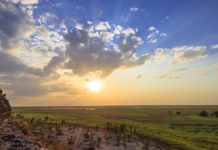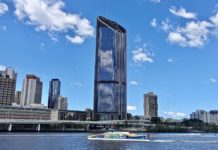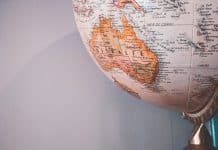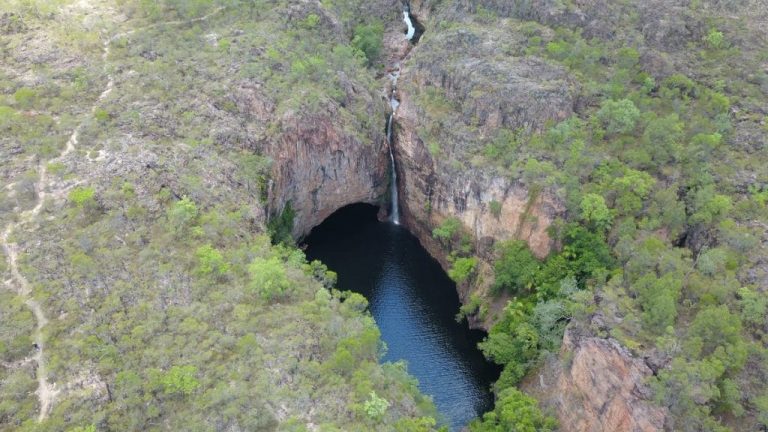
Litchfield National Park, located in the Northern Territory of Australia, is a stunning natural wonder renowned for its breathtaking waterfalls, crystal-clear swimming holes, and lush rainforests. Just a short drive from Darwin, this park offers an accessible and unforgettable experience for nature lovers, adventurers, and those seeking a serene escape. Here are the highlights of Litchfield National Park that you won’t want to miss.
Table of Contents
History of Litchfield National Park
The national park is located southwest of Darwin and was inhabited 60,000 years ago by the Mak Mak Marranunggu, the Werat, and the Waray Aborigines. In 1864, the area was discovered by the English explorer Fred Henry Litchfield. The British then annexed the region, killed or exploited the native people and cultivated agriculture and livestock. A few years later, tin and copper and then uranium were found in the soil.
It was in 1949 that the first uranium mine opened in Australia and became a source of wealth for the Northern Territory. Once exhausted of its resources, the site closed in 1971. Finally in 1986, Litchfield was declared a National Park.
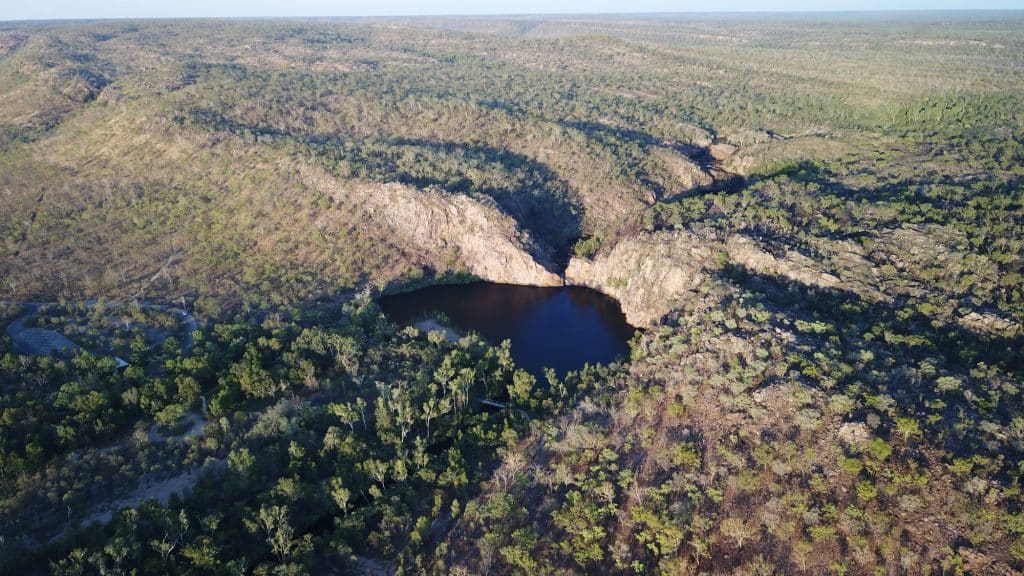
How to get to Litchfield National Park
Litchfield National Park is a 2 hour drive from Darwin. The main route is the most suitable for all types of vehicles passing by the tarred road of Stuart Highway, passing by Batchelor.
It is also possible to take the Cox Peninsula Road, but the road may be closed during the wet season (risk of flooding between November and March) and is not suitable for vehicles without 4-wheel drive.
It is also possible to join an organised tour departing from Darwin. There are day or multi-day tours that also include a visit to Kakadu National Park.
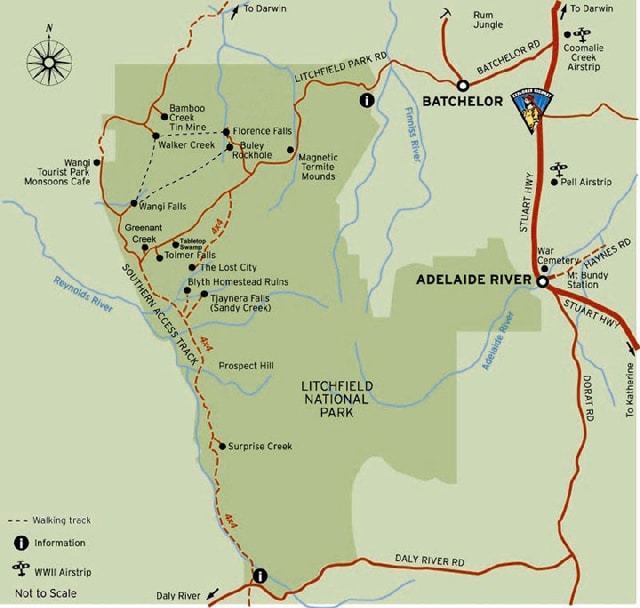
Our advice to make the most of your trip
- Visit on a weekday to avoid the crowds
- Go walking in the morning, when it’s cooler
- Cool off in the pools of the park in the afternoon
- Wear sunscreen during the day and mosquito repellent at dusk!
When to go to Litchfield National Park
The park is officially open year-round but may be closed due to adverse weather conditions, particularly due to the heavy rains that hit the region at certain times of the year.
It’s best to travel during the dry season, which is between April and September, and avoid the rainy season, between November and February. These are the two main seasons in the Northern Territory. The waterfalls are at their most spectacular during the rainy season, but this lasts until the start of the dry season, making April the best time to visit.
To find out the latest information about the park’s opening times etc, go to the government website.
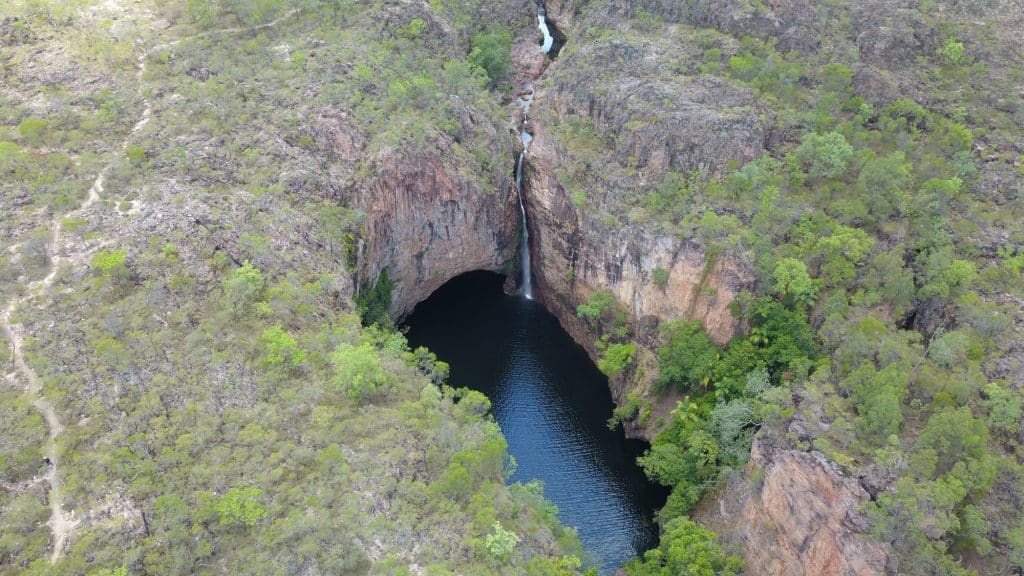
Activities to do at Litchfield National Park
Florence Falls
Florence Falls is one of Litchfield’s most popular attractions. This double waterfall cascades into a pristine plunge pool surrounded by lush monsoon forest. Visitors can take a refreshing swim in the cool waters or relax on the nearby rocks.
A viewing platform provides a perfect vantage point to admire the falls from above. For the more adventurous, a steep staircase leads down to the swimming hole. The Shady Creek Walk, a scenic trail that winds through the forest, offers another way to reach the falls and enjoy the surrounding flora and fauna.
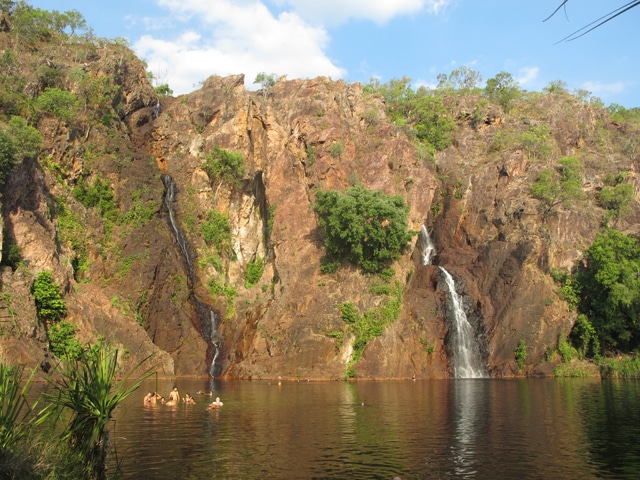
Wangi Falls
Wangi Falls is perhaps the most iconic and easily accessible waterfall in Litchfield National Park. Featuring a large swimming area and lush green surroundings, it is perfect for families and travelers looking for a relaxed day out. The site is well-equipped with picnic areas, barbecues, and a café, making it an ideal spot for a day trip. Boardwalks and viewing platforms allow for easy access and stunning photo opportunities.
Buley Rockhole
Buley Rockhole offers a series of small, cascading waterfalls and rock pools, creating a natural spa experience. Visitors can hop from one pool to another, enjoying the soothing flow of water and the surrounding tranquility. This area is perfect for picnics and relaxation. The rockholes vary in depth, providing safe options for both swimmers and those who prefer to wade.
Tolmer Falls
Tolmer Falls boasts one of the most impressive single-drop waterfalls in the park. While swimming is not allowed at the base, the viewing platform offers stunning vistas of the falls and the surrounding gorge. The nearby Tolmer Falls walk takes visitors through the rugged terrain, offering insights into the park’s geological history and the chance to spot rare species such as the orange leaf-nosed bat.
Visit unusual spots
Magnetic Termite Mound: The Magnetic Termite Mounds are one of the unique highlights of Litchfield National Park. These architectural marvels, built by termites, stand up to two meters high and are oriented north-south to minimize temperature fluctuation.
Lost City: Reserved for seasoned 4WD drivers only. Admire the impressive ancient sandstone remains of an abandoned city.
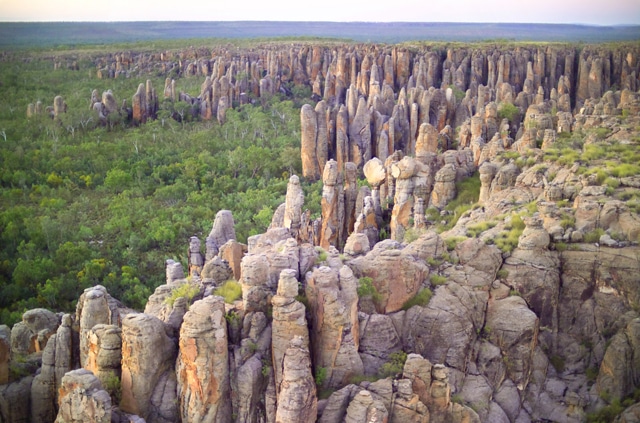
Go on a hike
The Tabletop Track loop allows for multiple trails as it passes through several spots that are worth seeing. Here are the longest and the shortest ones.
Tabletop Track: For those seeking a more challenging adventure, the Tabletop Track is a 39-kilometer loop that takes hikers through the heart of Litchfield National Park. The trail offers stunning vistas, diverse landscapes, and the chance to experience the park’s remote wilderness. Reserved for experienced hikers, plan several days to enjoy each stage of the trail.
Access via Wangi Falls, Greenant Creek, Florence Falls out Walker Creek.
Wangi Falls to Walker Creek: 1.6km one way.
Take a helicopter ride
A helicopter ride will take you over the most beautiful spots in the park. This is expensive ($500pp approximately) but worth it for the views and the memories!
Discover the flora and fauna
Thanks to its tropical climate, Litchfield National Park boasts lush vegetation. There are rainforests and marshes, and tropical flowers surround the many gorges dug in the ground by the waterfalls.
What animals will you find there?
Many species of animals live in the park, ranging from the cute – wallabies, geckos, kangaroos, possums and flying foxes – to the not-so-cute such as wild pigs, buffaloes, crocodiles, toads, snakes, bats, mice and spiders.
Watch out for insects!
The Nephila and the Huntsman are two species of spiders that live in the park. They may look scary due to their size, but they are considered harmless to humans.
Unfortunately, it’s the smaller pests that are more likely to cause you bother: green ants and mosquitos won’t leave you alone. Wear bug spray and a citronella wristband and pray!
Not to mention termites…
The park is known for its giant termite mounds that can measure several meters high.
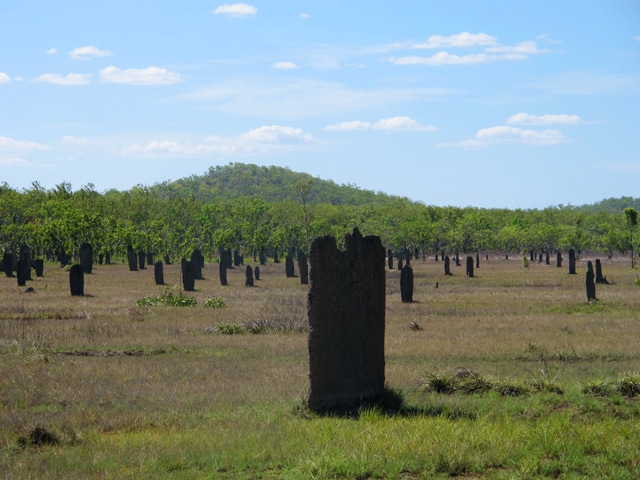
Where to sleep in Litchfield National Park
Paid and equipped campsites
Wangi Falls, Buley Rockhole, Central Valley, Walker Creek, and Florence Falls are campsites located within the national park.
Two campsites are only accessible by 4WD. These are Surprise Creek Falls and Tjaynera Falls (Sandy Creek Falls).
Each of these campsites is classified by category (A, B and D). Prices vary depending on the category and the facilities available (BBQ, restrooms and showers, picnic tables, etc.). Most campsites require you to pay online and you won’t be able to pay in person. Find out well in advance. This is also the case for some hikes.
Category B campgrounds have basic facilities (toilets, picnic tables, barbecue) and are a little more modest. Water is available but it must be boiled before drinking! The rate for this type of campsite is $6/adult.
Category A campgrounds have modest facilities such as: showers and toilets, cooking facilities, picnic tables and barbecue as well as garbage cans. Again, water is available but it must be boiled. The price is $12/adult.
Category D campgrounds have the best facilities. The quality of their services means that they can only accept a limited amount of people, so remember to make your reservations in advance. You access the campsite through a locked gate, unlike with other campsites where access is free. They usually have toilets, picnic tables and barbecues. Water should also be boiled here. The price is $20/adult.
Look at the list of campsites on the government website to find out what category they are classified in. You will also find all the information you need to camp there.
Free camps
Cross the bush to Walker Creek, which is on the edge of the river. You’re guaranteed a tranquil space here, but say goodbye to access to drinking water! Only dry toilets are present on site.
There are no free camps available inside Litchfield National Park, you will have to go a little further if you want to access this type of camp. About 2 hours north of Litchfield is the Finiss River Crossing free camp. it’s a bit far but it is one of the only options available if you don’t want to pay for a campsite. One idea is to go there before or after your visit to the park, when you’ll be passing it anyway.
Warning! Note that campfires must be lit in the designated locations provided for this purpose, and remember to always take your waste with you.
Hotels
If you want to stay in a hotel, you will have to go to Batchelor, right next to the national park. Here you will find very good accommodation options such as Litchfield Tourist Park or Banyan Tree.
Practical information
Water
Trash
Admission
Climate
Campervan Hire
In conclusion
Litchfield National Park is a must-visit destination in Australia’s Northern Territory, offering a diverse range of natural attractions and activities. From its spectacular waterfalls and serene rock pools to its unique termite mounds and challenging hiking trails, the park provides something for every type of traveler. Plan your visit to Litchfield National Park and experience the breathtaking beauty and tranquility of this remarkable Australian gem.




















